Maintaining a healthy backlink profile is crucial for any website’s success in search engine optimization (SEO). However, not all backlinks are beneficial.
In fact, low-quality or spammy backlinks can severely damage your website’s visibility on search engines. That’s where the power of disavowing backlinks in Ahrefs comes into play.
In this comprehensive guide, we will explore the importance of disavowing backlinks, understand the impact of harmful backlinks, and provide you with a step-by-step walkthrough on how to effectively disavow backlinks in Ahrefs.
Safeguard your website’s SEO today and unlock its true potential!
What is Disavowing Backlinks?
Disavowing backlinks refers to the process of informing search engines that you want them to ignore certain backlinks pointing to your website.
By disavowing backlinks, you are essentially telling search engines not to take those specific backlinks into account when assessing your website’s authority and ranking.
It is a powerful tool to ensure your website is not penalized due to low-quality or spammy backlinks.
Why Should You Disavow Backlinks in Ahrefs?
The Negative Impact of Low-Quality Backlinks on SEO
Low-quality backlinks can have a detrimental effect on your website’s SEO efforts. Search engines like Google consider backlinks as a vote of confidence from other websites. However, when these backlinks come from spammy or irrelevant sources, it raises red flags for search engines, leading to negative consequences for your website’s visibility and credibility. Disavowing such backlinks helps protect your website’s SEO.
How Ahrefs can Help Identify Harmful Backlinks
With its powerful Site Explorer tool, Ahrefs allows you to analyze your website’s backlink profile in great detail. It provides valuable insights into the quality and relevance of your backlinks. By utilizing Ahrefs, you can identify harmful backlinks that may be negatively impacting your SEO efforts. Armed with this knowledge, you can effectively disavow them and improve your website’s overall backlink profile.
Protecting Your Website from Google Penalties
Google’s algorithms are designed to detect and penalize websites with questionable backlink profiles. These penalties can range from a lower ranking position to complete removal from search engine results pages. By disavowing harmful backlinks in Ahrefs, you proactively protect your website from potential Google penalties and maintain a strong online presence.
Improving Your Website’s Overall Backlink Profile
Disavowing backlinks not only eliminates harmful links but also helps in building a stronger backlink profile. By disavowing low-quality backlinks, you create room for high-quality, relevant backlinks to shine. This improves the overall authority and credibility of your website, leading to better organic rankings and increased visibility.
Guide on Disavowing Backlinks in Ahrefs
Now that we understand the importance of disavowing backlinks, let’s dive into a step-by-step guide on how to disavow backlinks in Ahrefs effectively. By following these instructions, you can safeguard your website’s SEO and ensure its long-term growth.
Step 1: Accessing the Ahrefs Site Explorer Tool
To get started, log in to your Ahrefs account and navigate to the Site Explorer tool. This powerful feature allows you to gather comprehensive data about your backlinks and competitors’ backlink profiles. Click on the Site Explorer tab to access the tool.
Step 2: Analyzing Your Backlink Profile
Enter your website’s URL in the search bar within Ahrefs’ Site Explorer tool. Let Ahrefs analyze your website and provide you with detailed insights into your backlink profile. Pay attention to the referring domains and backlinks associated with your website.
Step 3: Identifying Harmful Backlinks
Within the Site Explorer tool, navigate to the “Backlinks” tab. Here, you will find a comprehensive list of backlinks associated with your website. Sort the backlinks by various metrics such as Domain Rating (DR) or URL Rating (UR) to identify low-quality or spammy backlinks. These are the backlinks you will want to disavow.
Step 4: Exporting the Harmful Backlinks
Select the harmful backlinks you’ve identified and export them into a CSV file. This file will serve as the foundation for creating your disavow file.
Step 5: Creating and Formatting the Disavow File
Open the exported CSV file in a spreadsheet program like Microsoft Excel or Google Sheets. Follow Google’s guidelines for creating a disavow file and format it accordingly. Include only the harmful backlinks you want to disavow in this file, ensuring each backlink is on a separate line and preceded by the “disavow” directive.
Step 6: Uploading the Disavow File to Google Search Console
Log in to your Google Search Console account and navigate to the Disavow Links tool. Select your website and choose the option to disavow backlinks. Upload the disavow file you created in Ahrefs, and Google will begin processing it. Note that this process may take some time before the effects are visible.
Step 7: Monitoring the Effectiveness of Your Disavow File
Regularly review your backlink profile within Ahrefs and compare it to your disavow file. Look for changes and improvements in the quality of your backlinks. Monitor how search engines are treating the backlinks you’ve disavowed and make adjustments to your disavow file as needed.
Best Practices for Disavowing Backlinks
While disavowing backlinks can be an effective strategy, it is important to follow best practices to achieve optimal results. Consider the following tips when disavowing backlinks in Ahrefs:
- How to Determine Which Backlinks to Disavow: Carefully analyze each backlink and consider its relevance and quality. Disavow backlinks that are low-quality, spammy, or irrelevant to your website’s niche.
- The Importance of Careful Review: Before disavowing any backlink, review it thoroughly to ensure it truly poses a threat to your SEO efforts. Avoid disavowing backlinks that may have potential value to your website.
- Disavowing Backlinks Sparingly: Use the disavow tool sparingly and only disavow backlinks that are genuinely harmful. Overuse of the disavow tool may result in unintended consequences, so approach it with caution.
- Regularly Review and Update: Your disavow file is not a one-time solution. Continuously review your backlink profile and update your disavow file as necessary. Remove backlinks that have improved or become relevant over time.
Common Mistakes to Avoid
To ensure you get the most out of the disavowing process, be aware of these common mistakes and avoid them:
- Mistake 1: Disavowing All Backlinks Without Proper Analysis: Don’t disavow backlinks blindly. Each backlink should be reviewed for relevance and quality before adding it to your disavow file. Disavowing high-quality backlinks can harm your SEO efforts.
- Mistake 2: Skipping the Step of Exporting Harmful Backlinks: Exporting your harmful backlinks into a CSV file is a crucial step in the disavowing process. Skipping this step may result in incomplete or inaccurate disavow files.
- Mistake 3: Incorrectly Formatting the Disavow File: Follow Google’s guidelines for formatting the disavow file accurately. Incorrect formatting can render the file unreadable by search engines, causing your disavow efforts to be ineffective.
- Mistake 4: Failing to Monitor the Effects of the Disavow File: Disavowing backlinks should be an ongoing process. Regularly monitor your backlink profile and the effectiveness of your disavow file. Make necessary adjustments and improvements as needed.
Conclusion:
Disavowing backlinks is a vital step in safeguarding your website’s SEO and ensuring its organic growth. By following the step-by-step guide and adopting best practices, you can effectively disavow harmful backlinks, boost your website’s authority, and protect it from potential penalties. Remember to review and update your disavow files regularly to maintain a strong backlink profile. Take control of your website’s SEO today and unlock its true potential with the power of disavowing backlinks.

